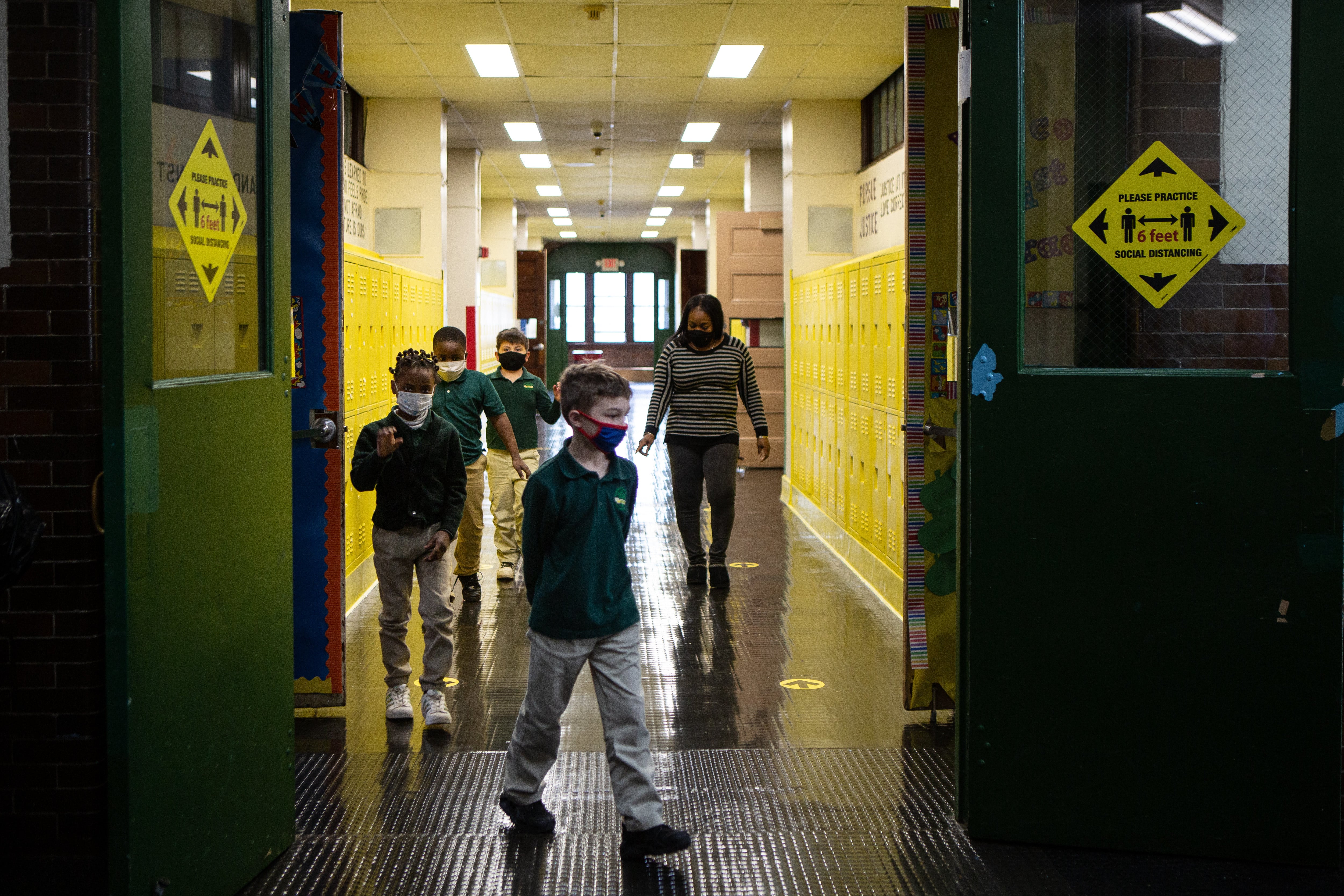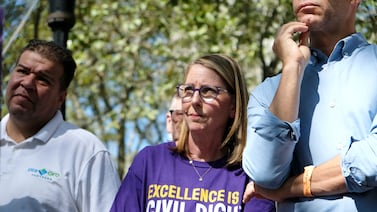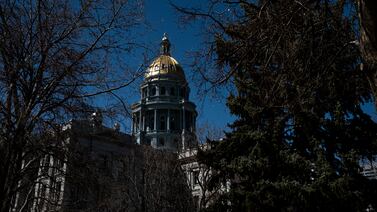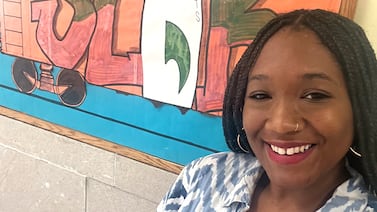Public and private schools have received over $190 billion in federal COVID money since the pandemic disrupted American education. Figuring out precisely where that has been going is not simple, as Chalkbeat described in this recent piece.
We’re not totally flying blind, though. If you’re a concerned policymaker, advocate, educator, parent, or citizen, there are some places you can look to begin to make sense of how this money is being planned for or used.
Although we’re in the middle of a school year and some of this money has already been spent, much of it hasn’t been. Districts have through September 2024 to budget the last bit of federal money.
Here’s our guide on what is out there right now.
How can I figure out what my school district plans to spend its COVID relief money on?
The simplest way to find your district’s spending plan is probably to just search the name of the district plus “ESSER” — we’ve found that typically works.
(A quick detour to explain the flurry of acronyms: ESSER refers to Elementary and Secondary School Emergency Relief Fund, which is the largest portion of federal aid, most of which goes to school districts. Each of the the three federal relief packages — CARES, CRRSA, and ARP — included ESSER funds. Sometimes you’ll see them referred to as ESSER I, II, and III, but you’ll often see them combined.)
Another good option is to go to this U.S. Department of Education page, which includes lists of links to district-by-district plans for most states.
Districts are required to publicly post a plan for how they plan to spend their most recent and largest ESSER allocation. You can see that in question A-4 in this federal document, which also spells out certain requirements for the plan.
“The plan must contain … how the [district] will use the funds … to address the academic impact of lost instructional time … and how the [district] will ensure the interventions it implements will respond to the social, emotional, mental health, and academic needs of all students and particularly those students disproportionately impacted by the COVID-19 pandemic,” the Department of Education says, although we found some district plans are not complying with this.
If you still can’t find a plan, you can inform school officials of the federal rules we just mentioned or consider filing a public records request with your district for this information.
Separately, private schools also have specific money earmarked for them as a group, but they are not required to post a plan on how they’re using it.
One other thing to keep in mind: A plan is just that.
Districts can – and probably will – revise their plans throughout this year and the next few years, since the last pot of money can be spent through 2024. Tracking actual spending will probably require going through district budget documents. Looking at budget documents is also helpful because they will typically provide more detail, and put the federal dollars in the context of a full district budget.
What should I look for in a school district spending plan?
Specificity and clarity.
Some plans we’ve seen clearly spell out the timeline and justification for spending every new federal dollar. Other plans don’t include dollar amounts or group the spending into just a few broad categories, making it hard to know exactly what money will be used for.
Some plans are simply difficult to read. You also might want to look at whether the district is complying with the specific requirements from the Department of Education, per the previous question.
Opinions vary on the best way to use this money, but some common uses include devices, personal protective equipment, additional teachers and counselors, tutoring, HVAC upgrades, and staff bonuses.
If you’re having trouble making sense of your district’s plan, consider asking district officials for clarity. It also might be worth trying to track down your district’s formal application to the state for funding, which might provide more details. Look on your district and state websites or consider filing a public record request.
How can I figure out how much money my school is getting?
Often that will be hard to figure out.
The vast majority of K-12 education money from each relief package was allocated to school districts (or “local education agencies” in legislative parlance, which sometimes include charter schools).
That means that money does not automatically go to a particular school, but rather to districts that typically operate multiple schools. District leaders then decide how to parcel out the money. They might give some directly to each school, but they don’t have to.
Many investments will be districtwide, such as buying personal protective equipment or hiring more counselors. That means that schools will benefit from the new money but won’t necessarily get to control it or get their own specific amounts. District leaders may not even track how much each school effectively received.
Where can I find how money is being spent across my state?
Some states have provided information about how and whether school districts are spending federal COVID relief dollars. Chalkbeat looked at the education department websites for all 50 states and found some information for the following ones: Arkansas, Delaware, Georgia, Hawaii, Indiana, Idaho, Louisiana, Kansas, Massachusetts, New Hampshire, New Mexico, New York, North Carolina, North Dakota, South Carolina, South Dakota, Utah, and Washington.
Be warned: these links vary a whole lot in quality and clarity. For instance, many of these states provide information on how much of the relief money has been spent, but little to no information on what it has been spent on. Most states don’t make any aggregated information available or easy to find.
Separately, you can also find information on states’ own spending plans. (Most of the ESSER money is allocated to districts, but a small bit, 10%, is allocated for state officials to manage and spend.) You can find centralized information on a site managed by the National Conference of State Legislatures, as well as from the Department of Education.
Where can I find how money is being spent overall, nationwide?
There are a couple of resources here, but each has important limitations.
The U.S. Department of Education has a portal where you can look up what share of federal money districts in each state have already spent. To do that, click on a state and then go to the ESSER section. (You can also look at the smaller pots of funding controlled by state governors, which includes funds for private schools, on the same site.)
For a number of reasons, there is a pretty big data lag here. In most cases, schools have spent — and committed to spend — far more than the federal site is reported. State reports where available are usually more up to date, though still have some lag.
Via the same federal portal, you can look at district by district spending by selecting a state, then expanding the ESSER section, and then clicking on the “2020 Report.” This will tell you how much districts reported spending between March and September 2020. This also includes five potential spending categories, although the most popular category has been “other,” which is obviously not very revealing.
Another resource is this report by the Georgetown-based think tank FutureEd. Analysts there identified trends using data from district plans reviewed by the private firm Burbio. This provides a big picture view of common ideas for using these funds.
Keep in mind that those conclusions come from only a subset of districts (covering 56% of American students), and reflect analysts’ subjective calls about how to categorize spending and assumptions in some places. And remember, these are plans, not actual spending.






